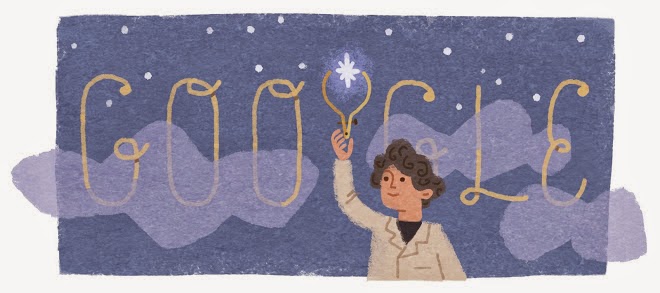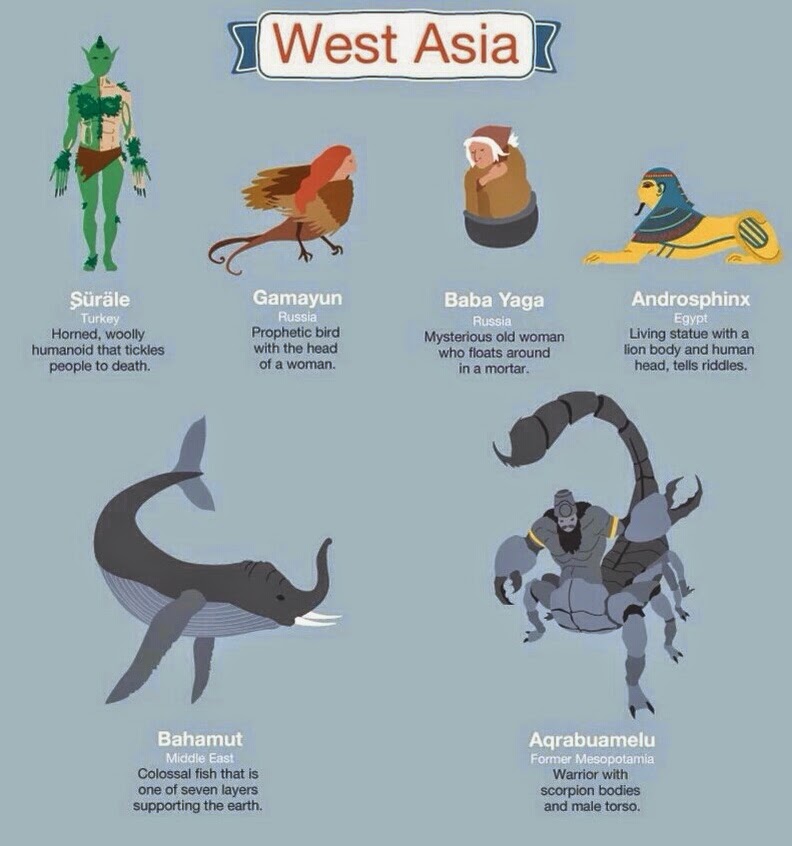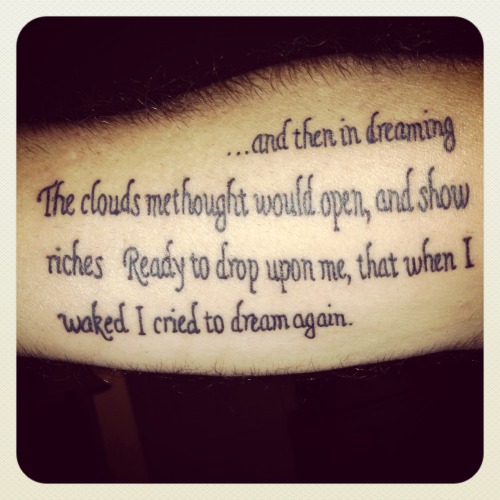I wish...
25 dezembro 2014
11 dezembro 2014
Annie Jump Cannon, Astronomer
1863 - 1941
Annie Jump Cannon was the eldest of three daughters to shipbuilder and state senator Wilson Cannon, and his second wife Mary Jump. It was Annie’s mother who encouraged her interest in astronomy, teaching her the constellations. Annie went on to study physics and astronomy at Wellesley, one of the top academic schools for women in the US. Annie did not take to the cold winter climate and on one occassion was striken with scarlet fever that rendered her almost completely deaf. She graduated in 1884 with a degree in physics and returned home, but grew restless with the limited career options open to women. Her hearing loss made it difficult to socialise, although she made a trip to Europe to photograph the solar eclipse in 1892. She returned home and in 1894 her mother died. She eventually reapproached her teachers at Wellesley and took graduate courses there in astronomy. She also learnt about spectroscopy and photography. In order to gain access to a better telescope she enrolled at Radcliffe Women’s College at Harvard, which gace her access to the Harvard College Observatory.
 In
1896 she joined the Harvard College Observatory women under director
Edward Pickering and by 1907 she had received an M.A. from Wellesley.
Her role, like the other women there, was to reduce data and carry out
astronomical observations. In particular, Pickering’s interest lay in
obtaining optical spectra of thousands of stars and to index and
classify them by their spectra. This analysis was begun by Nettie Farrar
and contined by Williamina Fleming, who devised a classification system
with 22 classes. The work was continued by Antonia Maury who invented
her own system. Finally Annie Cannon took over, and applied her own
scheme which resulted in the famous OBAFGKM classification which is
still used today. The ordering of the letters of Fleming’s original
system were rearranged by Cannon into order of decreasing surface
temperature. Cannon classified the most stars in a lifetime than anyone
else has ever achieved, around 350,000, published in Draper catalogues.
She could classify three stars a minute just by looking at their
spectral patterns, and using a magnifying glass could classify stars
down to 9th magnitude, around 16 times fainter than the human eye can
see. She also published catalogues of variable stars, including 300 that
she had discovered herself. At this time, women astronomers were paid
25 cents a day, much less than the secretatries at Harvard were paid.
In
1896 she joined the Harvard College Observatory women under director
Edward Pickering and by 1907 she had received an M.A. from Wellesley.
Her role, like the other women there, was to reduce data and carry out
astronomical observations. In particular, Pickering’s interest lay in
obtaining optical spectra of thousands of stars and to index and
classify them by their spectra. This analysis was begun by Nettie Farrar
and contined by Williamina Fleming, who devised a classification system
with 22 classes. The work was continued by Antonia Maury who invented
her own system. Finally Annie Cannon took over, and applied her own
scheme which resulted in the famous OBAFGKM classification which is
still used today. The ordering of the letters of Fleming’s original
system were rearranged by Cannon into order of decreasing surface
temperature. Cannon classified the most stars in a lifetime than anyone
else has ever achieved, around 350,000, published in Draper catalogues.
She could classify three stars a minute just by looking at their
spectral patterns, and using a magnifying glass could classify stars
down to 9th magnitude, around 16 times fainter than the human eye can
see. She also published catalogues of variable stars, including 300 that
she had discovered herself. At this time, women astronomers were paid
25 cents a day, much less than the secretatries at Harvard were paid.
Her career spanned more than forty years and she received many "firsts", including the first recipient of an honorary doctorate from Oxford and the first woman elected an officer of the American Astronomical Society. At Harvard she became the Curator of Astronomical Photographs after Fleming, but it wasn’t until 1938, just two years before her retirement, that she obtained a regular Harvard appointment as William C. Bond Astronomer. She also received the Henry Draper Medal which only one other female has won, she shared it with a male colleague. She was also listed as one of the 12 greatest living american women by the National League of Women Voters.
There is now the Annie Cannon Prize, awarded to women astronomers who have made outstanding contributions in astronomy.
She is an Astronomer website
Annie Jump Cannon was the eldest of three daughters to shipbuilder and state senator Wilson Cannon, and his second wife Mary Jump. It was Annie’s mother who encouraged her interest in astronomy, teaching her the constellations. Annie went on to study physics and astronomy at Wellesley, one of the top academic schools for women in the US. Annie did not take to the cold winter climate and on one occassion was striken with scarlet fever that rendered her almost completely deaf. She graduated in 1884 with a degree in physics and returned home, but grew restless with the limited career options open to women. Her hearing loss made it difficult to socialise, although she made a trip to Europe to photograph the solar eclipse in 1892. She returned home and in 1894 her mother died. She eventually reapproached her teachers at Wellesley and took graduate courses there in astronomy. She also learnt about spectroscopy and photography. In order to gain access to a better telescope she enrolled at Radcliffe Women’s College at Harvard, which gace her access to the Harvard College Observatory.
 In
1896 she joined the Harvard College Observatory women under director
Edward Pickering and by 1907 she had received an M.A. from Wellesley.
Her role, like the other women there, was to reduce data and carry out
astronomical observations. In particular, Pickering’s interest lay in
obtaining optical spectra of thousands of stars and to index and
classify them by their spectra. This analysis was begun by Nettie Farrar
and contined by Williamina Fleming, who devised a classification system
with 22 classes. The work was continued by Antonia Maury who invented
her own system. Finally Annie Cannon took over, and applied her own
scheme which resulted in the famous OBAFGKM classification which is
still used today. The ordering of the letters of Fleming’s original
system were rearranged by Cannon into order of decreasing surface
temperature. Cannon classified the most stars in a lifetime than anyone
else has ever achieved, around 350,000, published in Draper catalogues.
She could classify three stars a minute just by looking at their
spectral patterns, and using a magnifying glass could classify stars
down to 9th magnitude, around 16 times fainter than the human eye can
see. She also published catalogues of variable stars, including 300 that
she had discovered herself. At this time, women astronomers were paid
25 cents a day, much less than the secretatries at Harvard were paid.
In
1896 she joined the Harvard College Observatory women under director
Edward Pickering and by 1907 she had received an M.A. from Wellesley.
Her role, like the other women there, was to reduce data and carry out
astronomical observations. In particular, Pickering’s interest lay in
obtaining optical spectra of thousands of stars and to index and
classify them by their spectra. This analysis was begun by Nettie Farrar
and contined by Williamina Fleming, who devised a classification system
with 22 classes. The work was continued by Antonia Maury who invented
her own system. Finally Annie Cannon took over, and applied her own
scheme which resulted in the famous OBAFGKM classification which is
still used today. The ordering of the letters of Fleming’s original
system were rearranged by Cannon into order of decreasing surface
temperature. Cannon classified the most stars in a lifetime than anyone
else has ever achieved, around 350,000, published in Draper catalogues.
She could classify three stars a minute just by looking at their
spectral patterns, and using a magnifying glass could classify stars
down to 9th magnitude, around 16 times fainter than the human eye can
see. She also published catalogues of variable stars, including 300 that
she had discovered herself. At this time, women astronomers were paid
25 cents a day, much less than the secretatries at Harvard were paid.Her career spanned more than forty years and she received many "firsts", including the first recipient of an honorary doctorate from Oxford and the first woman elected an officer of the American Astronomical Society. At Harvard she became the Curator of Astronomical Photographs after Fleming, but it wasn’t until 1938, just two years before her retirement, that she obtained a regular Harvard appointment as William C. Bond Astronomer. She also received the Henry Draper Medal which only one other female has won, she shared it with a male colleague. She was also listed as one of the 12 greatest living american women by the National League of Women Voters.
There is now the Annie Cannon Prize, awarded to women astronomers who have made outstanding contributions in astronomy.
She is an Astronomer website
Etiquetas:
Astronomy Domine,
there are no limits to science,
Women
Caliban, tattooed
From The Word Made Flesh - O Verbo se fez Carne
Excerpt from Caliban’s soliloquy in “The Tempest”
"Be not afeard; the isle is full of noises,
Sounds, and sweet airs, that give delight and hurt not.
Sometimes a thousand twangling instruments
Will hum about mine ears; and sometime voices
That, if I then had waked after long sleep,
Will make me sleep again; and then in dreaming,
The clouds methought would open, and show riches
Ready to drop upon me, that when I waked
I cried to dream again.”
"Be not afeard; the isle is full of noises,
Sounds, and sweet airs, that give delight and hurt not.
Sometimes a thousand twangling instruments
Will hum about mine ears; and sometime voices
That, if I then had waked after long sleep,
Will make me sleep again; and then in dreaming,
The clouds methought would open, and show riches
Ready to drop upon me, that when I waked
I cried to dream again.”
Subscrever:
Mensagens (Atom)










